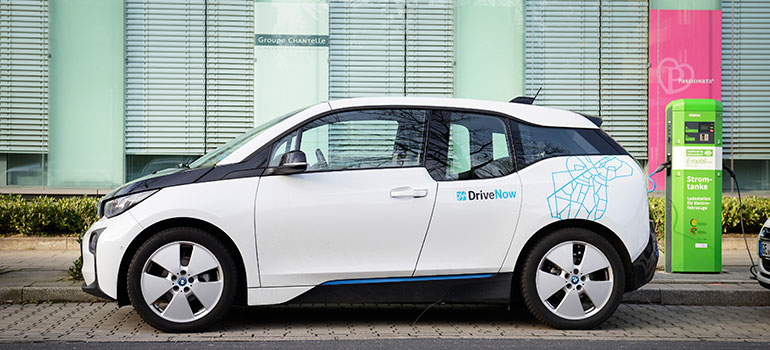
Prime Minister Justin Trudeau recently proposed a national carbon “floor price” by 2018, while south of the border, Washington state residents will vote on Nov. 8 whether to implement the United States’ first revenue-neutral carbon emissions tax.
UBC Sauder School of Business professor Werner Antweiler has studied the effects of B.C.’s carbon tax—introduced in 2008—and found that per-capita gasoline demand decreased by approximately 15 per cent between 2007 and 2014. He also found that the tax helped shift car purchases to higher fuel efficiency vehicles.

Werner Antweiler
Here, Antweiler discusses issues related to a national carbon floor price and Washington’s proposed carbon tax.
Critics of a federal carbon tax claim that Canada is too small of a country to have much of an impact on global carbon emissions. How could Canada have more of a global impact with a federal carbon tax?
Even though Canada’s emissions of greenhouse gases are only about 1.6 per cent of the world’s total compared to China’s 24.5 per cent, Canada’s leadership in addressing climate change is important. All countries need to do their bit, and the countries that lead through technological innovation can gain a competitive edge in the newly-developing market for climate solutions. At the $50/tonne price that is planned for 2022, innovation and investment into new climate-friendly technologies becomes financially attractive. Improving energy efficiency can even be a win-win: it reduces greenhouse gas emissions at the same time as it reduces long-term costs for businesses.
American environmentalists oppose Initiative 732 in Washington state because the tax revenues will not specifically target environmental initiatives. Do you think this is a wise argument? How has this worked in B.C.?
Instead of embracing the carbon tax, environmentalists are asking for a double-dividend green fund, which is similar to Quebec’s Green Fund and recycles revenue from the province’s cap-and-trade auctions. Subsidies fuelled by a double-dividend fund are more likely to lead to opportunistic expenditures and to showcase projects that use up the available funds without proper means-testing. Besides, governments have a poor track record of choosing cost-effective ways of reducing CO2 emissions, and markets are much better at finding the most efficient path by reacting to price signals.
Our research shows that fuel taxes of any level make a difference, so it is perfectly clear that carbon pricing in Washington will help reduce emissions slowly but steadily. But, new taxes remain unpopular, as does tinkering with a state tax system that is already in some disarray. If voters reject I-732, eyes will shift from Washington state to Washington D.C. for climate leadership.
At what level must carbon taxes be set in order to make a demonstrable difference in fuel consumption and greenhouse gas emissions?
Taxes are permanent and influence decisions related to driving behaviour and vehicle purchases three times more than price increases from volatile oil prices. Our research has found long-term effects from fuel taxes that are apparent through purchases of more fuel-efficient vehicles rather than changes in driving behaviour. It doesn’t matter what type of fuel tax it is: a carbon tax, a provincial excise tax (as Newfoundland’s 16.5¢/L increase in June 2016), adopting a harmonized sales tax (as Ontario’s jump from five to 13 per cent in July 2010), or local fees as in Montreal and Vancouver.
But even B.C.’s carbon tax amounts to just 6.67¢/L—a puny amount that pales in comparison to most fuel taxes in Europe. The new federal minimum carbon price of $50/tonne in 2022 would still amount to only 11¢/L. The effect of fuel taxes is also not immediate. It takes a few years for higher fuel prices to fully translate into purchases of more frugal vehicles. Carbon prices are no miracle cures—the economy needs time to respond to price signals through innovation and new investments.
